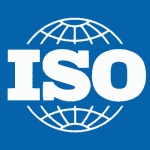Everyone was anticipating the release of the Microsoft Surface until it happened and got very mixed reviews. While the tablet looked very attractive, thin and light, it seemed the software was weak. Along with this reviews came out saying the attractive thin keyboard that was also the protection cover for the tablet was very difficult to use because of the material. The Surface also came with apps, but not even close to the amount of apps the Apple iPad has. Though the Surface is coming out with many more apps in January, it seems the hype for this product has not lived up to par.
Many customers were excited about a tablet having the Windows software, but critics are saying the software is like a split personality. There is a desktop mode that is similar to Windows 7, and then a new tiles interface but you have to continue to switch between the two interfaces.
After all of this, Microsoft got Oprah Winfrey to endorse the Microsoft Surface as one of the most desirable things. Companies get endorsers all the time to help out their products, but with all of the negative reviews do you think it is ethical that Microsoft got such a highly valued endorser when there are still many things to fix about their product? After Oprah Winfrey claims the Surface to be one of the most desirable things, many people who value her word will go and purchase this item without even thinking to look at the reviews.
And if Microsoft knows having Oprah Winfrey as an endorser will cause their sales to go up, when they still need to make the product a lot more user friendly, are they being smart for their business? Or is Microsoft being disloyal in a sense to their customers?
http://nvonews.com/2012/11/04/microsoft-surface-tablet-rt-endorsed-by-oprah-video/






